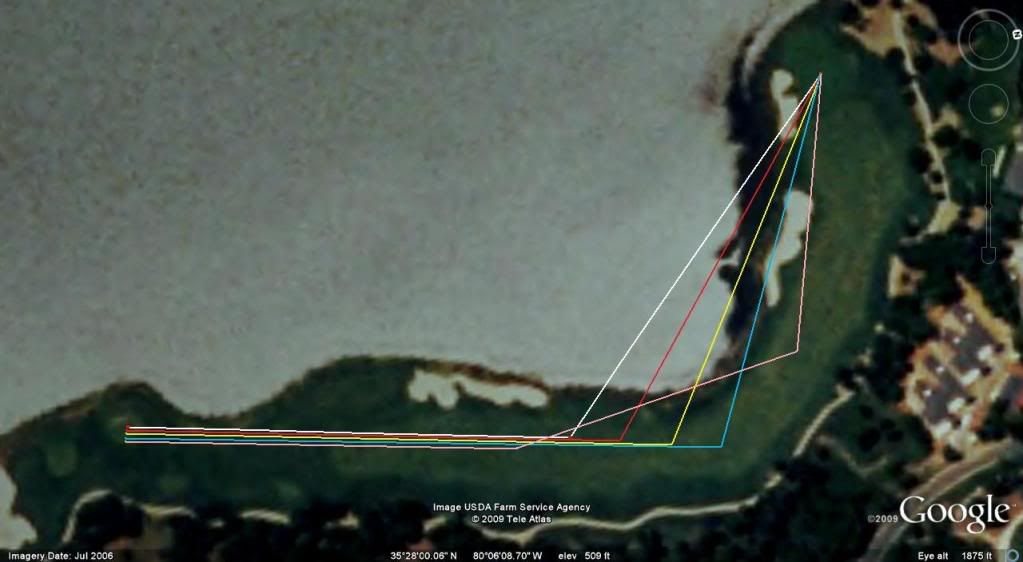I thought about posting this on Jerry Kluger’s “Risk/Reward Par 5” thread (link here:
http://golfclubatlas.com/forum/index.php/topic,39870.0/ ), but decided to start a new thread instead. Here is a Google Earth image of the 18th hole at Old North State Club on the shores of Badin Lake in NC:

This hole is a par 5 marked at 568 yards from the Championship tees. But for purposes of this thread, I am using the next longest set of tees, marked at 534 yards, since they are the most commonly played. Regardless, the marked length is largely irrelevant because the sharpness of the dogleg reduces the effective yardage considerably. The white line shows a drive of 225 yards, which leaves an equal distance of 225 yards to the center of the green. The red line reflects a drive of 250 yards, leaving 215 yards to the green. The yellow line is a 275 yard drive with 205 yards remaining to the center of the green. And the blue line shows a 300 yard drive, which leaves 195 yards.
What you see is that anyone who can hit the ball 225 yards off the tee has an enticing shot at reaching the green in two. From there its really just a shade over 200 yard carry to clear the right side of the greenside bunker and reach the front of the green. But notice the diminishing returns of longer drives. For each additional 25 yards you hit it off the tee, you only gain 10 yards on the flag. Plus the fairway narrows the longer the drive and finding the fairway is critical since only the best or most foolish golfers would risk going for the green from the rough. For that reason, many longer hitters take a fairway wood or even a long iron off the tee because they almost certainly will have a go at the green as long as they can find the short grass. So what you have is a par 5 that presents a viable risk/reward option for a broad range of skill levels.
Of course, nothing works for everyone. Take a look at the pink line. It represents a 200 yard drive. That golfer has no chance of going for the green. Even if he moves up a tee box, it is too far. Moreover, he is left with a tough layup of 150 yards to a tight landing area with water in play. And if he pulls it off, he’s left with another 150 yards to reach the green.
In my experience, low handicappers eat this hole up. A par is a disappointment. Mid and even mid-high handicappers love the hole because it is a rare realistic opportunity for glory. On the other hand, really high handicappers often struggle to finish the hole, ending the round on a sour note.
So what do you think? Is this a good design for a risk/reward par 5?
PS – Here is the view from the tee…

…and from the 225 yard drive range…

…and from the 300 yard drive range…
